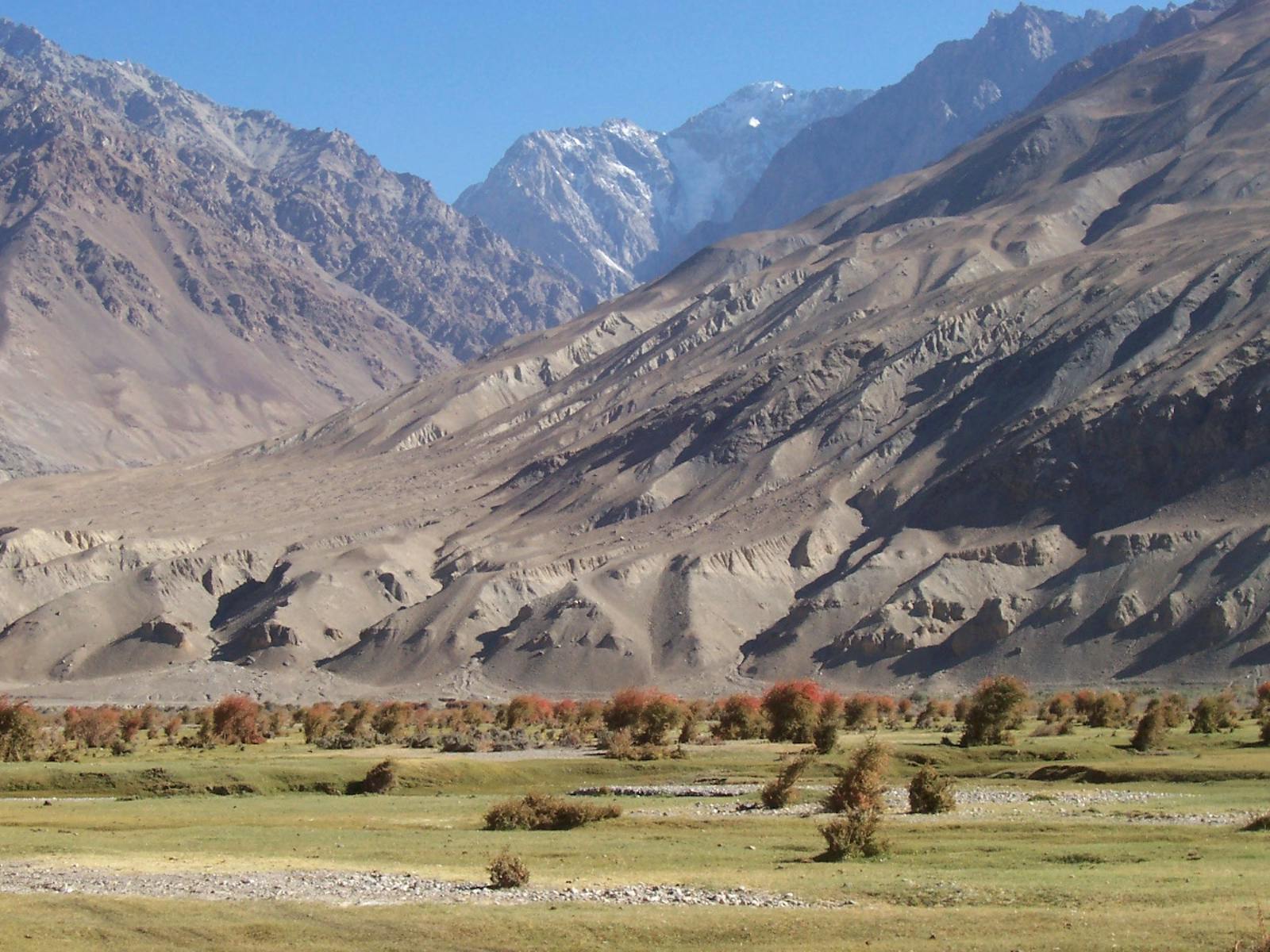Hindu Kush Alpine Meadow
The ecoregion’s land area is provided in units of 1,000 hectares. The conservation target is the Global Safety Net (GSN1) area for the given ecoregion. The protection level indicates the percentage of the GSN goal that is currently protected on a scale of 0-10. N/A means data is not available at this time.
Bioregion: Himalayan-Pamir Alpine Shrub & Meadows (PA41)
Realm: Eastern Eurasia
Ecoregion Size (1000 ha):
2,833
Ecoregion ID:
753
Conservation Target:
5%
Protection Level:
0
States: Afghanistan, Pakistan, Tajikistan
Reaching heights of up to 6,500 m in the Hindu Kush range of the Himalayas, this ecoregion boasts breath-taking vistas alongside a varied flora and fauna. Ibex, markhor, and mouflon are some of the species to be found on the ground, whilst Saker falcons and eagles pass overhead. The meadows are also home to vast herds of livestock owned by local nomadic pastoralists, with rapidly expanding herd numbers in recent years leading to severe overgrazing of the landscape and posing a serious existential threat to the region.

The flagship species of the Hindu Kush Alpine Meadow ecoregion is the markhor. Image credit: Creative Commons
This disjunct ecoregion forms part of the western Hindu Kush Himalayas in Afghanistan and is bordered by Pakistan in the east and Tajikistan in the north. Most of the region sits between around an elevation of 3,500 m, with peaks of over 6,500 m creating dramatic mountain landscapes. Cold temperatures are typical at higher altitudes where much of the precipitation falls as snow. At lower altitudes, the average temperature is higher, with July daily temperatures often exceeding 40ºC and winter day temperatures averaging around 10ºC.
Subalpine thickets and cushion shrublands typify the vegetation in this region. These are interspersed with patches of open rocks and scree which are almost devoid of vegetation save for a few specially adapted species such as Didymophysa fedtschenkoana. Alpine meadows are dominated by grasses and a rich variety of herbs including Sibbaldia cuneate and the delicate Primula macrophylla. At more humid sites where precipitation is higher, thickets of juniper form in the fertile soils alongside shrubs such as blueberry honeysuckle, Astralagus spp., and Onobrychis spinosissima.
Wild cats can be found in some parts; Siberian ibex traverse varied terrain in the north from rocky slopes to open meadows. In the southeast of the ecoregion, the incredibly rare Kashmir musk deer exists at the western edge of its limit. This unusually fanged mammal is listed as endangered by the IUCN due to pressures from habitat loss and poaching. The rare but impressively horned markhor—a subspecies of wild goat, and mouflon—a subspecies of wild sheep—may also be found in some parts of the ecoregion. Endangered Saker falcons and Pallas’ fish eagles can be spotted soaring across the region’s skies, with chukar partridges to be found feeding on insects and plants throughout the grasslands.
Extensive grazing of livestock occurs across the region as lush alpine meadows provide good foraging grounds. However, expanding livestock herds and cutting of shrubs for firewood by local pastoralists has led to significant habitat degradation and a shift in plant communities towards varieties with increased physical and chemical defenses. Increasing competition for food with domesticated cattle, sheep and goats has pushed species such as the markhor to the edge of their ranges. There are currently no protected areas within the ecoregion, and available information regarding the functioning and composition of the ecosystems here is insubstantial.
In addition to overgrazing and other pressures exerted by an increasing human presence in this mountain region, desertification as a result of climate change threatens to compound land degradation and vegetation loss. As well as limiting food available for several wild species, shrub loss also has the potential to cause significant soil erosion, which subsequently increases the risk of landslides and floods. Hunting is another pressure that threatens biodiversity in the region and has led to steep declines in some species populations, including the highly-prized Saker falcon which are sold in bird bazaars in several of Afghanistan’s major cities.
Priorities conservation actions for the next decade will be to: 1) rapidly expand protected area coverage across the region; 2) engage the private sector and civil society to support nature conservation, especially working with local communities to limit the impact of overgrazing and shrub cutting; and 3) improve enforcement of hunting bans across the region.
Citations
1. Breckle, S.W. (2007). ‘Flora and Vegetation of Afghanistan’ Basic and Applied Dryland Research 1, 2 (2007), 155-194. DOI:10.1127/badr/1/2007/155
2. Islamic Republic of Afghanistan (2014) ‘National Biodiversity Strategy and Action Plan’. [Online]. Available from: https://postconflict.unep.ch/publications/Afghanistan/NBSAP_Eng.pdf [Accessed 18/12/2019]
3. Islamic Republic of Afghanistan (2014) ‘Fifth National Report to the United Nation’s Convention on Biological Diversity’. [Online]. Available from: https://www.cbd.int/doc/world/af/af-nr-05-en.pdf [Accessed 18/12/2019]


.png?auto=compress%2Cformat&w=300)

